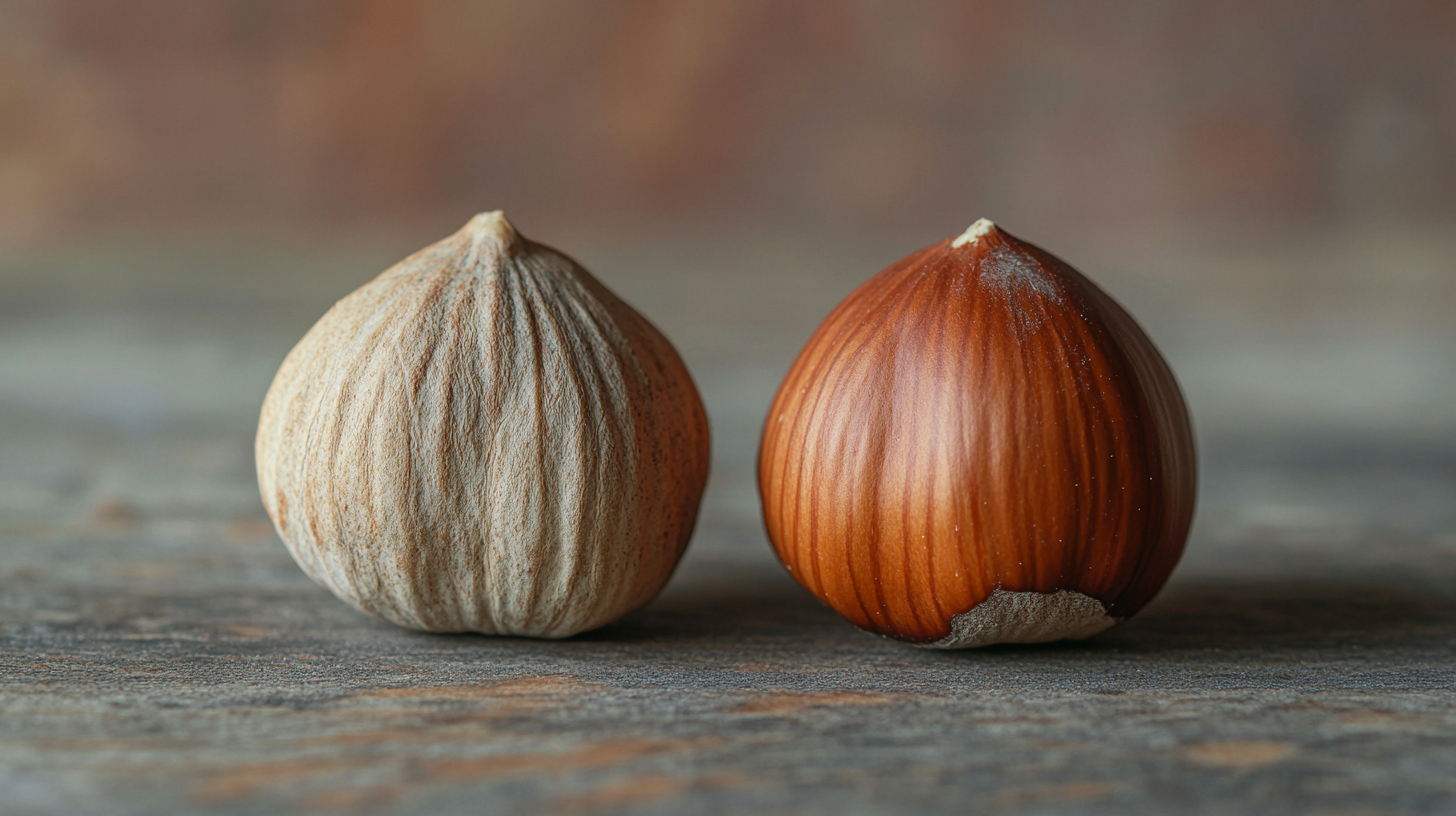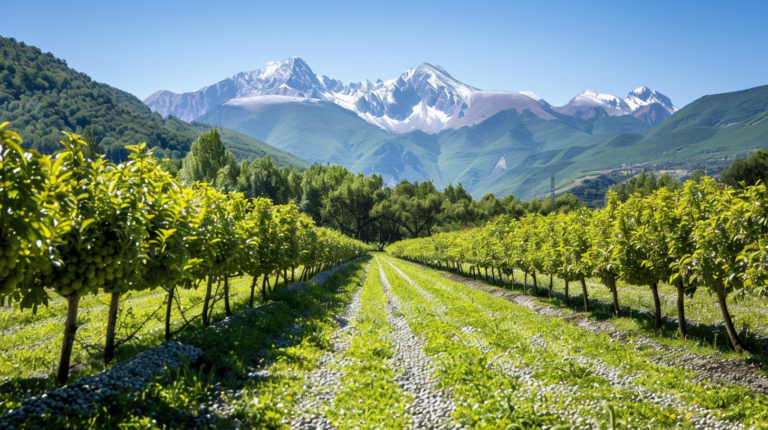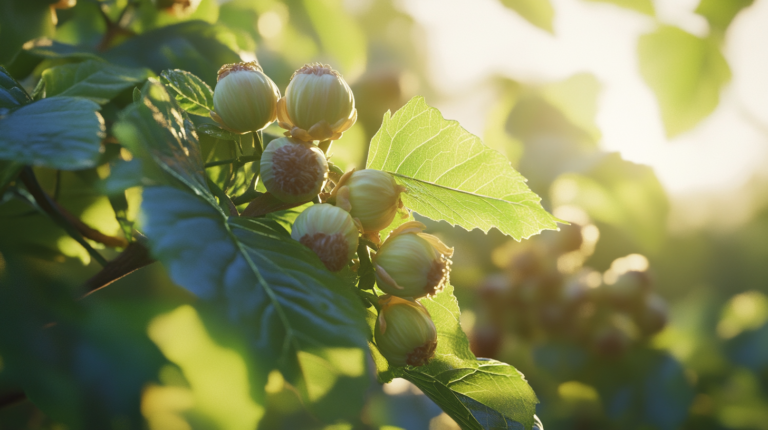Comparing Growth Habits of European and American Hazelnut Varieties
Hazelnuts, also known as filberts, are popular nut-bearing shrubs or small trees that belong to the genus Corylus. Two of the most widely cultivated species are the European hazelnut (Corylus avellana) and the American hazelnut (Corylus americana). While both species produce edible nuts, they exhibit distinct growth habits and characteristics that make them suitable for different environments and purposes.
European Hazelnut (Corylus avellana)
The European hazelnut, native to Europe and western Asia, is the primary source of commercial hazelnuts worldwide. It is prized for its large, flavorful nuts and adaptability to various growing conditions.
Growth Form and Size
European hazelnuts typically grow as multi-stemmed shrubs or small trees, reaching heights of 15-20 feet tall with a spread of 10-15 feet [1]. With proper pruning and training, they can be shaped into a single-trunked tree form. The plants have a moderately fast growth rate, allowing them to establish quickly in suitable conditions.
Foliage and Flowers
The leaves of European hazelnuts are broadly oval with serrated edges, providing attractive foliage throughout the growing season. In late winter to early spring, before the leaves emerge, the plants produce separate male and female flowers on the same tree [1]. The male flowers appear as long, pendulous catkins, while the female flowers are small and inconspicuous.
Nut Production
European hazelnuts are known for their larger nut size compared to their American counterparts. The nuts are encased in a husk that opens as they ripen, typically in late August to September [1]. For optimal pollination and nut production, it’s recommended to plant at least two different varieties of European hazelnuts.
Climate and Soil Requirements
These hazelnuts thrive in USDA hardiness zones 4-8, preferring full sun to partial shade [1]. They are adaptable to various soil types but perform best in well-drained, slightly acidic to neutral soils (pH 6.0-7.0). European hazelnuts have moderate drought tolerance once established but benefit from consistent moisture during the growing season.
Disease Resistance
One significant challenge for European hazelnuts is their susceptibility to Eastern Filbert Blight (EFB), a fungal disease that can be devastating to orchards [1]. However, ongoing breeding programs have developed varieties with improved resistance to this disease.
American Hazelnut (Corylus americana)
The American hazelnut is native to eastern North America and offers unique characteristics that set it apart from its European cousin.
Growth Form and Size
American hazelnuts typically grow as multi-stemmed shrubs, reaching heights of 8-16 feet with a spread of about 8 feet [3]. They have a more compact growth habit compared to European hazelnuts, making them suitable for smaller spaces and naturalized areas.
Foliage and Flowers
The leaves of American hazelnuts are similar to those of European hazelnuts but tend to be slightly smaller. The plant produces male catkins in late winter, which are showy and can reach 2-3 inches in length [3]. Female flowers are small and inconspicuous, appearing on the same plant.
Nut Production
American hazelnuts produce smaller nuts compared to European varieties, but they are still edible and have a sweet flavor. The nuts are encased in a leafy, husk-like bract with ragged edges [3]. While the nuts are smaller, American hazelnuts often produce a more consistent crop from year to year.
Climate and Soil Requirements
These native shrubs are highly adaptable and can thrive in USDA hardiness zones 4-9. They are tolerant of a wide range of soil conditions, including both dry and moist locations [3]. American hazelnuts perform well in full sun to partial shade and are known for their resilience in urban environments.
Disease Resistance
One of the significant advantages of American hazelnuts is their high resistance to Eastern Filbert Blight [4]. This natural resistance makes them valuable for breeding programs aimed at developing disease-resistant hybrid varieties.

Comparing Growth Habits
When comparing the growth habits of European and American hazelnuts, several key differences emerge:
Size and Form
European hazelnuts tend to grow larger, often reaching heights of 20 feet or more, while American hazelnuts typically max out at 16 feet [1],[3]. European varieties can be trained into a tree form, whereas American hazelnuts usually maintain a multi-stemmed shrub appearance.
Nut Size and Quality
European hazelnuts are prized for their larger nut size and are the primary choice for commercial production. American hazelnuts produce smaller nuts but often in greater quantities [4]. The flavor of American hazelnuts can be slightly more bitter compared to the sweeter European varieties.
Climate Adaptation
While both species can tolerate cold temperatures, American hazelnuts generally have better cold hardiness and can thrive in a broader range of climates [3]. European hazelnuts may require more protection in colder regions.
Disease Resistance
American hazelnuts have a significant advantage in terms of disease resistance, particularly against Eastern Filbert Blight [4]. This makes them valuable for breeding programs and suitable for areas where the disease is prevalent.
Suckering Habit
American hazelnuts have a stronger tendency to produce root suckers, which can lead to the formation of thickets if not managed [3]. European hazelnuts also sucker but generally to a lesser extent.
Cultivation and Management
The differences in growth habits between European and American hazelnuts influence their cultivation and management practices:
Planting
For European hazelnuts, it’s crucial to plant at least two different varieties to ensure proper cross-pollination [1]. American hazelnuts are often self-fertile but benefit from having multiple plants for better pollination.
Pruning
European hazelnuts may require more extensive pruning to maintain their desired shape, especially if grown as trees. American hazelnuts typically need less pruning but may require occasional thinning to prevent overcrowding [3].
Harvesting
The larger nuts of European hazelnuts are often easier to harvest and process. American hazelnuts, while smaller, can be harvested using similar methods but may require more effort due to their size.
Pest and Disease Management
European hazelnuts may need more intensive management for Eastern Filbert Blight, including regular inspections and pruning of infected branches. American hazelnuts generally require less disease management but may still be susceptible to other pests and diseases.
Hybridization and Breeding Programs
The distinct characteristics of European and American hazelnuts have led to extensive breeding programs aimed at combining the best traits of both species. Hybridization efforts focus on:
- Developing varieties with the nut quality of European hazelnuts and the disease resistance of American hazelnuts.
- Improving cold hardiness to expand the range of commercial hazelnut production.
- Creating cultivars with improved yields and more consistent production [2].
These breeding programs have resulted in several hybrid varieties that offer a balance of desirable traits from both parent species.
Ecological Considerations
The growth habits of these hazelnut species also impact their ecological roles:
Wildlife Value
Both European and American hazelnuts provide valuable food sources for wildlife. However, the native American hazelnut may have a slight edge in supporting local ecosystems, as it has co-evolved with North American wildlife [3].
Landscape Use
The compact growth habit of American hazelnuts makes them excellent choices for naturalized areas, woodland gardens, and hedges [3]. European hazelnuts, with their larger size, are often used as specimen trees or in larger landscape designs.
Soil Conservation
The extensive root systems of both species make them valuable for soil stabilization and erosion control. The suckering habit of American hazelnuts can be particularly useful for this purpose.
Conclusion
the growth habits of European and American hazelnut varieties offer distinct advantages and challenges for growers and landscapers. European hazelnuts excel in nut production and size, making them the preferred choice for commercial orchards. American hazelnuts, with their compact growth, disease resistance, and adaptability, are valuable for native plantings, breeding programs, and smaller garden spaces. Understanding these differences allows growers to select the most appropriate variety for their specific needs and conditions, whether for commercial production, home gardens, or ecological restoration projects.
Sorces:
[1] https://www.thespruce.com/hazelnut-tree-growing-guide-5196351
[2] https://www.arborday.org/programs/hazelnuts/learn/expansion-varieties.cfm
[3] https://www.wisconsinfoodforests.com/american-hazelnut/
[4] https://www.reddit.com/r/Permaculture/comments/curao8/american_versus_european_hazelnuts/
[5] https://www.planetnatural.com/hazelnut-tree/
[6] https://extension.oregonstate.edu/catalog/pub/em-9072-growing-hazelnuts-pacific-northwest-introduction
[7] https://campustrees.umn.edu/american-hazel
[8] https://forest.jrc.ec.europa.eu/media/atlas/Corylus_avellana.pdf
[9] https://treetime.ca/compare.php?pcids=434-617






